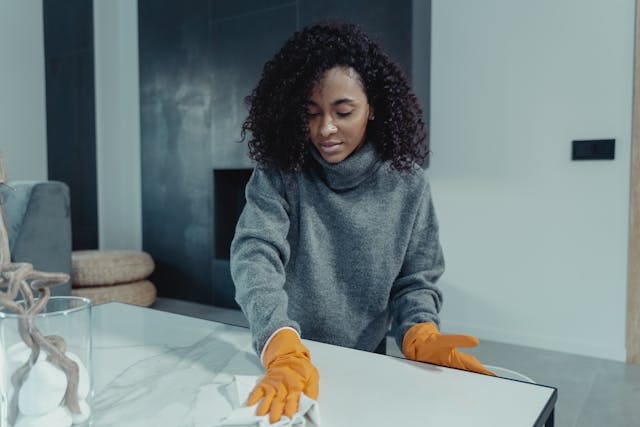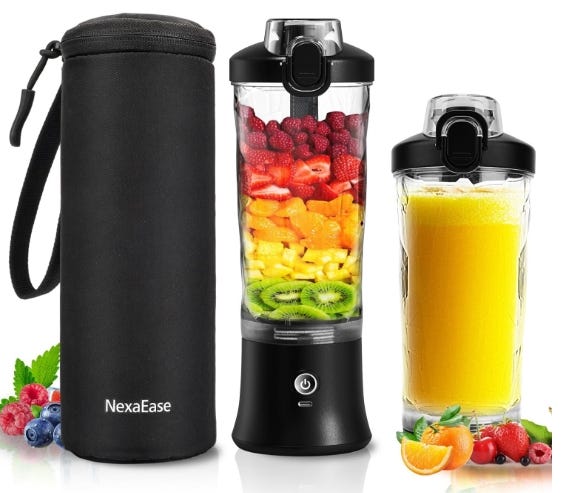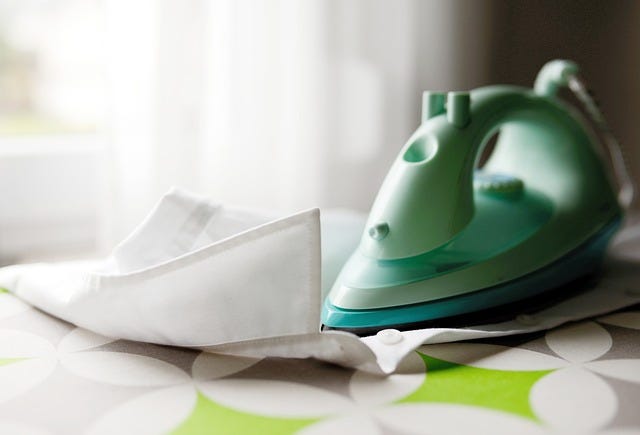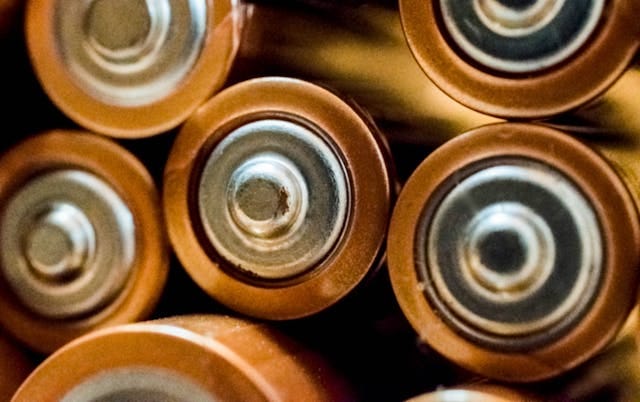11 eco-friendly ways to clean popular household items
Getting ready to make your home a vacation rental? These cleaning hacks keep it clean for walk-throughs

This post has been updated from its original April 19, 2025 publication date.
Whether you’re flipping a house, renting a home out as an Airbnb, getting ready to move or spring cleaning, keeping a home clean (and all appliances in working order) is necessary. But sometimes multi-purpose cleaner and pest repellent isn’t getting the job done — or you feel like you’re buying it nonstop. Did you know that some other common, eco-friendly household items may do a better job of keeping your home clean?
These 11 cleaning hacks may do a better job of keeping your home tidy than popular name brands.
DIY fruit fly trap
Homemade carpet cleaner
Homemade dish soap
Homemade burnt pot cleaning
Homemade garbage disposal cleaner
Homemade iron cleaner
Homemade oven rack cleaner
DIY shower head cleaner
DIY cast iron skillet cleaning
Homemade suede chair and couch cleaning
Homemade battery cleaner
(Bonus) Plant cleaning tips to remove toxins
ADVERTISEMENT ~ Amazon
As an Amazon Affiliate, I earn a percentage for each purchase with my referral links.

1. Eco-friendly ways to keep fruit flies away from fruit baskets
Instead of refrigerating or freezing all of your fruit, or risking toxic chemicals accidentally being sprayed on them, try this eco-friendly fruit trap.
Small mason jar, glass or cup
Apple cider vinegar (or white vinegar), fruit juice or ripe fruit
(optional) Dish soap
Plastic wrap
Rubber band
Toothpick or fork
Once you have all of your supplies, pour one-half inch of apple cider vinegar in the jar, glass or cup. Then, add a few drops of dish soap. Cover the top of the container with plastic wrap. If your plastic wrap naturally sticks, then poke a few holes (using a fork or toothpick) in the top. If it does not automatically stick, use a rubber band to keep the wrap in place. Then, poke a few holes.
How does this work?
Fruit flies love the smell of vinegar. When they travel into the plastic wrap hole, the dish liquid will make them sink to the bottom of the plastic container. You will start to see a collection of black spots in this vinegar and dish liquid trap. Empty every few days, then refill. You can also try to avoid fruit flies from entering your home by washing all of your fruit before storing it, especially bananas. If you’re uncomfortable with killing fruit flies, use fruit juice or ripe fruit instead. The plastic wrap will still keep them in place. You can then just take the glass outside, pull off the plastic wrap and shake the fruit (and the fruit flies) out into the lawn (or street). Rinse the jar and repeat.

2. Eco-friendly ways to clean carpet
From a wine stain to a dog having a urine accident, this can fully clean and deodorize your carpet.
1 cup of white vinegar
2 cups of water
2 teaspoons of salt
15-20 drops of essential oil (fragrance of your choice but dogs hate the smell of peppermint)
2 microfiber cloths
Once you’ve gathered all of your supplies, start with mixing the vinegar and water in a spray bottle. Then, add the salt and (optional) essential oil. Shake the ingredients. Spray a light mist onto your carpet, and let it sit for a few minutes to loosen grime and dirt. (You may want to test the green-cleaning carpet cleaning solution on a small patch to make sure it doesn’t result in discoloration.) After it’s settled for a few minutes, use the cloth to remove and clean the stain. Use a second cloth to rinse out the solution. Then, you can either let it air dry or use a third cloth to blot it dry. (If you have a dog, use a dog gate around the area until it’s fully dry so your pup doesn’t try to lick the area.)
How does this work?
Vinegar is a natural cleaner, primarily because its acetic acid helps to dissolve and lift stains, including pet accidents and wine spills. Instead of buying pet deodorizer, vinegar already breaks down odor-causing bacteria and kills germs.
ADVERTISEMENT ~ Amazon
As an Amazon affiliate, I earn a percentage for each sale made with my referral links on this page.
3. Eco-friendly ways to clean dishes
If you’re worried about what’s in your water already and whether it’s cleaning your dishes enough, a do-it-yourself dish liquid may be the way to go.
1 cup of liquid castile soap
1/4 cup of distilled water (or homemade distilled water)
1 tablespoon of white vinegar
1 tablespoon of baking soda
10-15 drops of essential oil for fragrance and antibacterial properties
1 teaspoon of vegetable glycerin for extra moisturizing (optional, ideal for dry skin)
Large bowl
Spray bottle
Funnel
Once you have all of your supplies, combine the soap and distilled water. Then, slowly add in the white vinegar and baking soda. (Be ready for the liquid to rise and bubble up.) Pour in (optional) essential oil and vegetable glycerin, then stir. Use a pot funnel to pour the mixture into a clean bottle that you can use to squeeze for easy cleaning. Shake it up, spray and clean per usual.
ADVERTISEMENT ~ Amazon
As an Amazon affiliate, I earn a percentage for each sale made with my referral links on this page.
How does this work?
Castile soap, which is made from olive oil or other vegetable oils, breaks down grease and food residue without harsh chemicals. The plant-based cleaner is also not harsh on skin while still being able to lift grime. Additionally, baking soda is a mild abrasive that can gently scrub away food residue, grease and stains without scratching pots and pans.
ADVERTISEMENT ~ Amazon
As an Amazon affiliate, I earn a percentage for each sale made with my referral links on this page.
4. Eco-friendly ways to clean burnt pots
If the homemade dish liquid with castile soap didn’t do the trick, try these options:
2 tablespoons of baking soda (light burns), 1/4 cup of baking soda (moderate burns), 1/2 cup of baking soda (heavy burns)
1/2 cup of white vinegar (light burns), 1 cup of vinegar (moderate burns), 1.5 cups-2 cups of vinegar (heavy burns)
Pot of boiling water
2 tablespoons of salt (light burns), 1/4 cup of salt (moderate burns), 1/2 cup of salt (heavy burns)
1/2 lemon
5 tablespoons of hydrogen peroxide (light burns), 1/2 cup of peroxide (moderate burns), 1 cup of peroxide (heavy burns)
How does this work?
You can use any of these four to clean burnt pots:
Baking soda + vinegar -or-
Boiling water + baking soda -or-
Lemon + salt -or-
Peroxide (alone)
Baking soda and vinegar (see “How does this work?” above) may do the trick on their own. If not, the citric acid from a lemon can break down burnt food while the gentle abrasive comes from the salt.
ADVERTISEMENT ~ Amazon
As an Amazon affiliate, I earn a percentage from purchases with my referral links. I know some consumers are choosing to boycott Amazon for its DEI removal. However, after thinking about this thoroughly, I choose to continue promoting intriguing products from small businesses, women-owned businesses and (specifically) Black-owned businesses who still feature their items on Amazon. All five of my Substack publications now include a MINIMUM of one product sold by a Black-owned business. (I have visited the seller’s official site, not just the Amazon Black-owned logo, to verify this.) If you still choose to boycott, I 100% respect that decision.
SHOP AROUND: Black-owned products that you may want to try on Amazon ~ Window Shopping fully embraces diversity, equity and inclusion, and supporting small businesses!
5. Eco-friendly ways to clean a garbage disposal
Just because you press a button to remove discarded food into a garbage disposal doesn’t mean it all automatically goes away.
1/4 cup of baking soda
1/4 cup of vinegar
Dish soap
Toothbrush
Sponge
Ice cubes
1/2 cup of salt
Lemon or orange (optional)
Toothbrush or sponge
Microfiber cloth
Once you’ve gathered all of your supplies, turn off your garbage disposal. If a plug is not accessible, shut it off on your circuit breaker. Clean the full sink area with a sponge or cloth. Remove any large objects that may be clinging onto the shredder rubber ring. Use tongs or pliers for any other large objects. Drop a handful of ice cubes into the disposal. Then, pour salt onto the ice. Turn the garbage disposal on again, and let it run. Finally, pour the baking soda and vinegar into the garbage disposal. Let this continue for no more than 15 minutes (or until you hear that sound of an empty garbage disposal) to break down grime and grease.
How does this work?
The ice will pull up grime and food particles that are stuck inside the impeller or flywheel.
Recommended Read: “DIY pest traps may help you skip the expensive extermination bill ~ From mice to roaches to ants and bed bugs, these homemade rodent and bug traps can keep your home pest-free”

6. Eco-friendly ways to clean an iron
While you’re usually just using starch and water to keep your clothes crispy and wrinkle-free, that pesky rust mark on an iron doesn’t have to appear.
1/2 cup of distilled water
1/2 cup of white vinegar
2 tablespoons of baking soda (optional)
Microfiber cloth
Once you have all of your supplies, combine the vinegar and water. Use a microfiber cloth to surface-level clean the soleplate (the flat, plated area that straightens clothes). Then, fill the reservoir (iron opening where water goes inside) with the mixture. Turn the iron to its highest temperature. Allow it to heat up. Let it steam for up to 30 seconds to flush out the mineral deposits. Pour out any remaining solution. Fill the iron up with distilled water again, and repeat the steaming process. Allow the iron enough time to cool. Wipe with a microfiber cloth again.
If that doesn’t clean the iron entirely, mix the baking soda with one tablespoon of water. Once the vinegar and distilled water are mixed into a paste with a baking soda, rub the soleplate again with a microfiber cloth.
How does this work?
Vinegar removes rust through its acetic acid. This chemical reaction results in the rust (iron oxide) reacting with the acid to loosen it enough to wipe it away.
7. Eco-friendly ways to clean oven racks
In the past, you may have turned on your self-cleaning oven and let it do all the work of cleaning your oven entirely. But those racks should’ve been removed beforehand to avoid discoloration and ruining the factory finish.
Recommended Read: “Self-cleaning oven vs your dog ~ Should pet owners hand-wash or use the self-clean feature?”
1/2 cup of baking soda
1 cup of white vinegar
2 tablespoons of dish soap
1/2 cup of lemon juice (or squeeze three medium-sized lemons)
Microfiber cloth
If needed, soak the stove racks overnight in a kitchen sink or bathtub filled with baking soda and water. This will break up the grease and soften hardened food remnants. Then, wipe them off the next day. If you can clean the oven racks with dish liquid, use that instead. If you’re still having a tough time getting the oven racks back in tip-top condition, use lemon juice for stubborn oven rack stains. (Lemon doubles as a deodorizer.) Rinse the racks with warm water. Let the racks dry. When the self-cleaning oven cools off, place the racks back inside.
How does this work?
While the fizzing from vinegar and baking soda creates a reaction, the acid and alkaline are still gentle enough not to strip the chrome or protective coating on the racks.

8. Eco-friendly ways to clean a shower head
While shower head manufacturers recommend replacing a shower head every six months, some homeowners feel about their shower head the same way they feel about a snuggly pair of jeans. They’ve finally found ones they want and don’t want to part with it — unless more than one was purchased. In the meantime, keeping it clean helps preserve the shower head.
Gallon-size freezer bag (or a large water pitcher)
1/2 cup of baking soda
2 cups of white vinegar
1 cup of water (optional)
1 twist or zip tie
1 tablespoon of dish liquid
ADVERTISEMENT ~ Amazon
As an Amazon affiliate, I earn a percentage for each sale made with my referral links on this page.


Once you’ve gathered all of your supplies, inspect your shower head. For stubborn or clogged spots, use dish liquid to scrub those clean. Then, pour the baking soda in the bag. Slowly pour the vinegar in the bag. (Expect fizzing. Adding water into the baking soda and vinegar mix will make it less thick.) When the baking soda and vinegar mixture is no longer sizzling and is a foggy liquid, submerge the shower head into the bag’s cleaning solution. Use a twist tie or zip tie to keep the bag in place. (If you cannot get all holes to submerge into the shower head, or the bag looks like it’s going to slide off, remove your detachable shower head and put it in the bag (or pitcher).
Let the shower head soak for approximately four hours. When your time is up, carefully remove the shower head from the pitcher and re-insert it. (Or, remove the bag if the shower head stayed in place.) Pour the vinegar and baking soda mixture down the tub drain (this mixture can be used for unclogging hair). Use a microfiber cloth to wipe the little rubbery nozzle areas. Run your shower water for a minute or two.
ADVERTISEMENT ~ Amazon
As an Amazon affiliate, I earn a percentage for each sale made with my referral links on this page.

How does this work?
Unlike soap scum, baking soda doesn’t leave behind residue that clogs small openings. It also dissolves mineral buildup and removes grime from harsh bathroom-cleaning chemicals.
9. Eco-friendly ways to clean a cast iron skillet
If you’re anything like me, you probably recycle cleaning instructions for pots and pans as soon as they’re out of the box. Unfortunately, I went several years without realizing my cast iron skillet was not supposed to be submerged in dish liquid. Somehow, it survived, and I never cleaned it like a glass again.
Paper towels
Kosher salt
Neutral oil (ex. vegetable oil, canola oil, sunflower oil, grapeseed oil)
Once you have all of your supplies, with a paper towel, wipe away initial food with a paper towel and kosher salt. Then, coat the entire cast iron skillet with light oil (including the handle and the bottom of the skillet). Wipe away excess oil to avoid pooling. Then, rub the pan with your index finger to make sure it’s dry. If it feels super slippery, keep wiping so you don’t end up with a sticky pan. Spread out a sheet of aluminum foil on the oven rack underneath the one you’ll put your skillet on. Bake your skillet upside down at 350 degrees Fahrenheit for one hour. Let the pan cool inside. Repeat all steps above if it still looks dry and patchy.
ADVERTISEMENT ~ Amazon
As an Amazon affiliate, I earn a percentage for each sale made with my referral links on this page.


How does this work?
Salt pulls out excess oil and residue. And because cast iron is prone to oxidation, oil forms a barrier that keeps moisture out. It also creates a protective layer, preventing rust and enhancing the pan’s nonstick properties.
10. Eco-friendly ways to clean a suede couch or suede chair
Suede furniture can be dangerous, especially if you have children or pets. While a suede cleaning block or suede cleaner would be obvious choices, here are suggestions that you may have around your home already.
Dry brush
Rubber eraser
2 tablespoons of rubbing alcohol
2 tablespoons of white vinegar
Microfiber cloth
Use the dry brush to loosen any suede stains. Then, use a rubber eraser to attempt to remove the stain. If neither of those options work, pour rubbing alcohol or white vinegar on a microfiber cloth. Rub it in until the stain disappears. Once you’ve gotten the stain out, make sure to use a dry towel or hair dryer to fluff the suede material back to its usual condition.
How does this work?
A rubber eraser can gently remove surface grime without harsh scrubbing. It’s best for removing light scuffs and water spots.

11. Eco-friendly ways to keep batteries from corroding
If you have an emergency kit set up, chances are pretty high that batteries for a battery-powered radio are involved (if products like hand-cranked or solar-powered radios aren’t). But batteries have a habit of corroding when not in use, especially when they’re out of their original packaging. (This can also happen when batteries are overcharged or housed in an electrical device that’s not in use for long periods of time.) Storing them in a dry, cool place helps. Keeping them clean in this same storage area helps to preserve their longevity too.
6 tablespoons of baking soda
4 cups of water
Soft-bristled brush (ex. old toothbrush)
Small dab (ex. fingerprint) of petroleum jelly
Lint-free cloth (ex. microfiber cloth)
Inspect batteries to see if you see signs of acid buildup. With a mixture of baking soda and water, use a soft brush to scrub the batteries gently. Then, rub a thin layer of petroleum jelly on the terminal area (the point of the battery that connects to a device, charger or circuit) to prevent moisture and rust. Rinse the area with clean water. Finally, place the batteries in a cool, dry area to air dry. Or, use a cloth to dry the batteries thoroughly by hand.
How does this work?
When baking soda reacts with the acid, it forms a saltwater. This is used to safely clean and prevent (more) corrosion. Before assuming batteries are no good and tossing them, try to see if they can be saved by following this process to clean batteries.
BONUS TIP: Eco-friendly ways to remove toxins, absorb carbon monoxide and purify air.
While plants are natural air purifiers, one of the biggest perks of air plants is that they don’t need soil. Out in the wild, air plants grow on top of other plants (usually trees), and get their nutrients from air, debris, dust and water. However, indoor air is limited for removing toxins such as formaldehyde (from paint, detergent, cosmetics, plywood, tobacco smoke) and benzene (from furniture wax, detergents, glues, paints, gas station vapor if you live near a gas station). You’d also need hundreds of low-maintenance air plants at home in order to fully do the job.
So, what type of plant can you add to your home that will increase humidity and improve air quality? Snake plants, peace lilies and spider plants are some of the best options.
How does this work?
Snake plants, spider plants and peace lilies can absorb volatile organic compounds (VOCs) like benzene and formaldehyde. Snake plants convert carbon dioxide into oxygen as well. With that said, natural ventilation (i.e., opening windows and vents) and air purifiers are more effective unless you have a plentiful amount of plants in your home.
Did you enjoy this post? You’re also welcome to check out my Substack columns “Black Girl In a Doggone World,” “BlackTechLogy,” “Homegrown Tales,” “I Do See Color,” “One Black Woman’s Vote” and “Window Shopping” too. Subscribe to this newsletter for the now-weekly paid posts each Friday (as of March 16, 2025). Thanks for reading!











